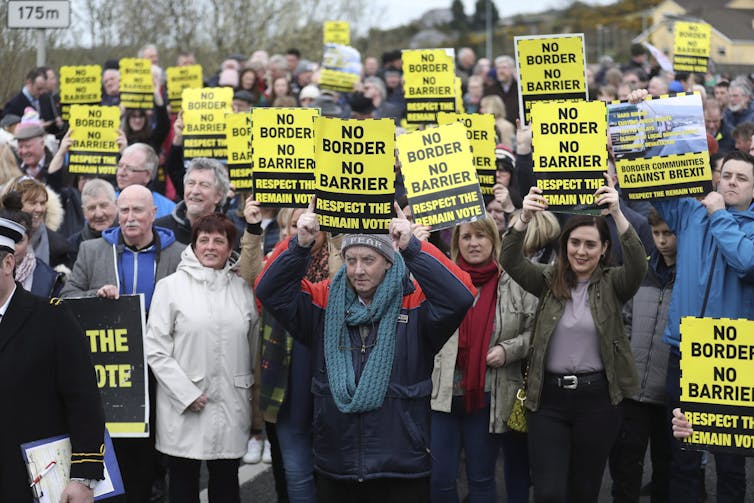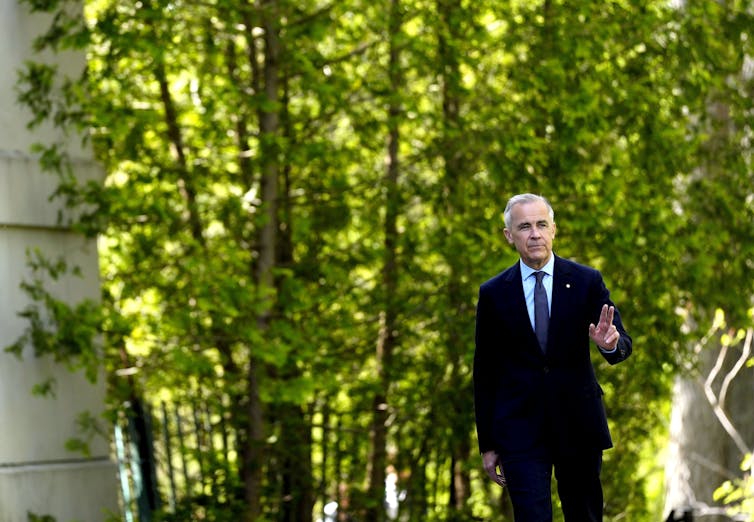Mark Carney’s election was reassuring for many Canadians amid sovereignty threats from United States President Donald Trump. But the new prime minister’s plan to create a highly integrated Canadian economy is sparking concern in economic and political circles.
How exactly will he be able to create a single economy where Canada currently has 13?
As a specialist in Canadian political economy and director of the Centre d’analyse politique — Constitution Fédéralisme at the Université du Québec à Montréal (UQAM), I believe that the United Kingdom’s Brexit experience has many lessons for Canada at this point in its history.
As the British state carried out the post-Brexit work of creating internal markets quickly and unilaterally, it imposed centralized laws on jurisdictions like Scotland and Wales.
Will this also happen in Canada?
Brexit, a setback for Britain’s smaller nations
As governor of the Bank of England during the Brexit debates, Carney established himself as an advocate for keeping the U.K. in the European Union (EU). But while the English and Welsh rejected the political and economic alliance with the EU, Northern Ireland and Scotland saw it as advantageous to their economies and voted to remain.
The years following Brexit have been difficult for the U.K. and have led to political setbacks for the Scotland, Wales and Northern Ireland. The central government has taken initiatives that have wiped out many of their hard-won gains.

(AP Photo/Peter Morrison)
For example, London pushed through the United Kingdom Internal Market Act 2020 without consulting those primarily affected by it — its Scottish, Welsh and Northern Irish constitutional partners. The ratification of the act led to a significant loss in self-government for these three nations within the U.K.
Canadian nationalism
Forty-five years ago, following the failure of the May 1980 referendum in Québec, Canada’s central government embarked on vast efforts to contain the powers of the province within the federation.
One of the key elements in this offensive was the entrenchment of the Canadian Charter of Rights and Freedoms in the Constitution. This prioritized the construction of a mono-national identity that worked to undermine Acadian, Indigenous and Québécois identities.
Ottawa then moved into the field of social policy, which had previously been the responsibility of the provinces. In 1985, it adopted the Canada Health Act; its key principles are public management, comprehensiveness, universality, portability and accessibility to care.
Following that, at a time when provincial governments lacked the financial resources they needed to meet their own population’s vital needs, the Canadian government pursued a nation-building project based on a strong idea of identity that guaranteed access to health care from coast to coast.
Jean Chrétien’s government made draconian cuts in transfer payments in the months leading up to the 1995 referendum in Québec. The impact was felt immediately in Québec as hospitals closed and thousands of nurses were forced into retirement.
The after-effects of the failure of the 1995 referendum were still being felt when Ottawa embarked on another nation-building initiative aimed at establishing new funding rules: the Canadian social union. The central government sought to impose itself as the only true master of the game in Québec, where political forces were advancing in a scattered fashion amid an uncertain political climate and a fragile economy.
Canadian protectionism
Trump’s election in the U.S. damaged the Canadian economy and offered Carney a trump card, so to speak, that helped the Liberals win a fourth consecutive mandate.
After four decades of economic policies based on free trade and globalization, Trump’s return to the White House marks a break with economic liberalism. This brings back to the forefront the work of the Macdonald Commission, established by Pierre Trudeau’s government in 1982, which initially had a protectionist mandate.

THE CANADIAN PRESS
But the commission concluded instead that Canada urgently needed policies that would enhance trade with the United States. The report, published in 1985, became aligned with the pro-free trade policies of Brian Mulroney’s Progressive Conservatives when they swept to power in September 1984.
Read more:
Brian Mulroney, champion du libre-échange, a rapproché le Canada des États-Unis
The idea was to open the U.S. market to Canadians and create the conditions for an integrated domestic market. But as long as the U.S. was willing to trade without too many constraints, there was no urgency to relaunch the construction of the East-West oriented economy that John A. Macdonald had imagined in his 1879 “national policy,” envisioned by the Rowell-Sirois Commission (1937-1940).
The conditions were still not ripe to pursue this great project of integration.
Things have evolved in recent months with Trump’s challenge to the Canada-U.S.-Mexico Agreement and ever-changing rules of access to the U.S. market.
However, in the Macdonald Commission’s report on economic union and development prospects, published in 1985, the commissioners said:
“The Canadian nation is not a weak and fragile plant doomed to disappearance merely because we trade more freely and securely with our American neighbour. Free trade will reduce regional divisions and enhance Canadian confidence. Canadian nationalism and our collective identity as a people are deeply rooted in more than a century of our evolutionary common existence.”
The commissioners argued in favour of an open marketplace and downplayed the impact of interprovincial trade restrictions. This position is surprisingly lax in relation to the original mandate Pierre Trudeau gave to the commissioners.
A federalist façade?
During the recent election campaign and in the weeks since, Carney has repeatedly stressed the importance of including an integrated domestic market in his nation-building project, all under the single umbrella of the Canada’s federal government.
How far will Carney go? Will he be able to force the members of the Canadian federation to accept his conditions and relinquish their constitutional powers in the name of the country’s all-encompassing pursuit?

THE CANADIAN PRESS/Justin Tang
It’s too early to tell. But the prime minister is preparing the public for such a move by evoking a sense of existential political crisis. Will he set up an internal market designed to integrate Canada’s economies into a single one, even if that means weakening the provinces? Trudeau did exactly that in 1982, when he repatriated the Constitution without Québec’s consent, as did Chrétien when he adopted the social union framework.
Ottawa can use its spending powers to give itself the authority it claims to need, allowing it to act beyond its constitutional responsibilities. Since the entrenchment of the Canadian Charter, which doesn’t adequately take into account the multinational nature of Canada, Ottawa has presented itself as the protector of all citizens similar to how it handled the COVID-19 crisis.
The main challenge for provinces and territories is not so much to prevent Ottawa from acting, since that would be unfavourable to them, but to ensure that they’ll each have their say and be considered genuine partners in the Canadian federation.
Collectively, they will be able to defend the interests of their political communities and ensure that Canadian federalism is more than just window dressing.



